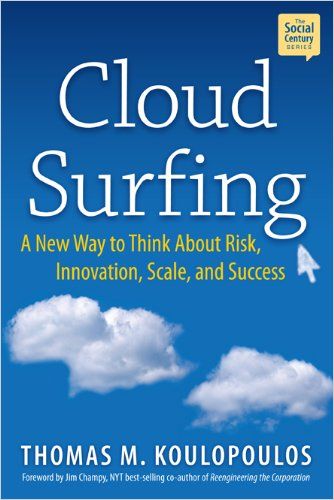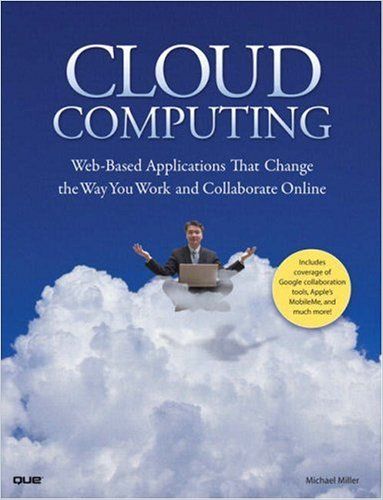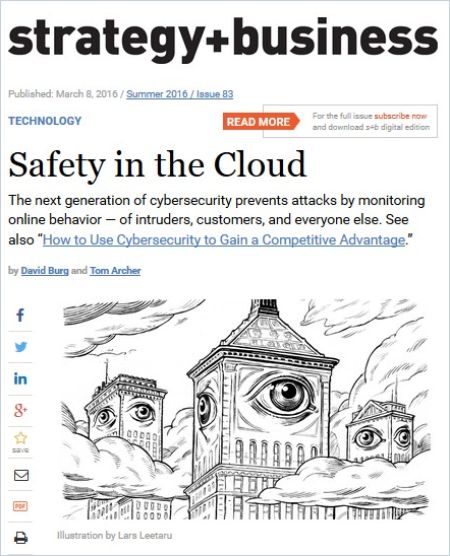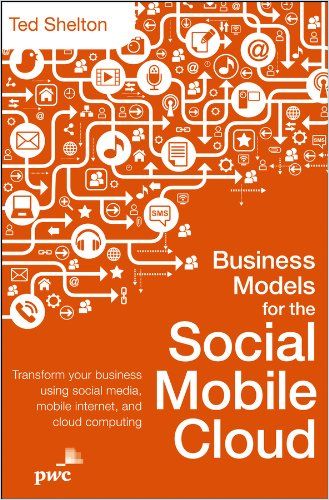With Cloud Computing, the Sky’s the Limit

When you check your Gmail, work on Office 365 or Netflix and chill, you’re using cloud computing. Salesforce famously and profitably ushered in the era of software-as-a-service, highly dependent upon then-emerging cloud technologies. Adobe migrated its profitable digital design software, previously only available on disc, to the cloud and a subscriber model in 2013 to realize exponentially greater profits. During the pandemic, cloud computing allowed businesses and their employees to survive and even thrive. Cloud-based technologies provide the options, flexibility, scalability and cost efficiencies that businesses are constantly looking for – all the storage space and computing power they need to accomplish any task. The cloud is, ironically, the solid bedrock of “agile.”
1. From Basements Full of Servers to a Network Blanketing the World
Cloud computing services host data and share resources over multiple servers, often over several physical locations in data centers. The servers you use are connected to each other and your business via the Internet. The hosting company maintains the servers and shares much of the security function of keeping them safe.
Rather than maintaining your data and software on your own computers, you can grow your storage space and computing power as the need arises by buying or leasing it “in the cloud” from a service provider and without the headache of server maintenance. Cloud service providers also take on many of the connectivity and security responsibilities that formerly resided within IT departments while managing traffic fluctuations to your site or services. The cloud continues to evolve as companies expand their use of cloud services.
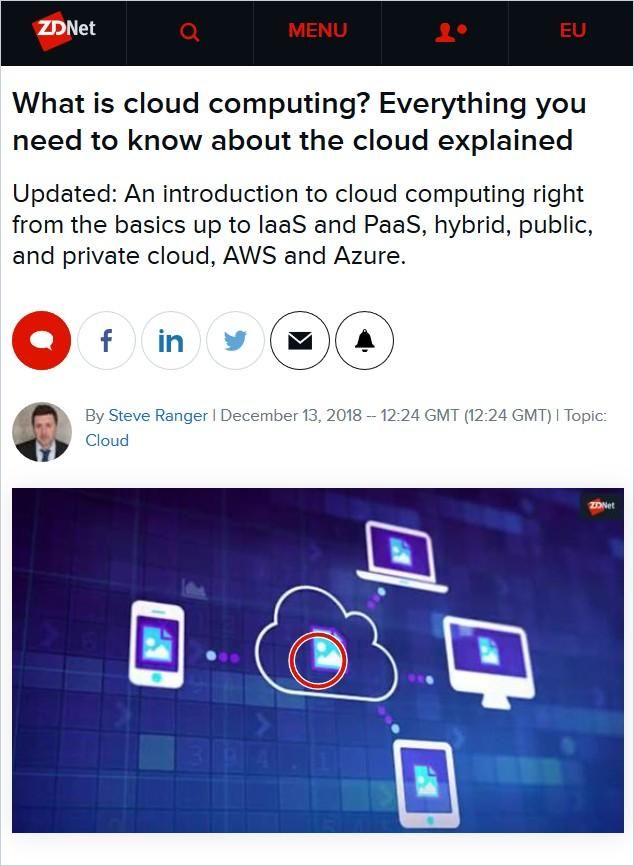
Journalist Steve Ranger describes three ways to think about the services that cloud computing provides:
- Infrastructure as a Service (IaaS) – You can lease or buy all the servers, storage space and networked connectivity that you need, as you need it.
- Platform as a Service (PaaS) – These options provide development tools, including the ability to install operating systems and add databases in addition to infrastructure.
- Software as a Service (SaaS) – Companies provide their software or services via the internet, through a website or an app. Most people use some kind of SaaS in their email program or to store and share files.
But really, the cloud is the basis for XaaS – Anything as a Service.
2. Cloud Benefits and Risks
Cloud computing is a way to access cutting-edge technologies and computing power without investing in your own hardware, software and, in many cases, IT know-how. With flexible and unlimited computing potential, cloud services are ideal for quickly setting up and testing experiments. It’s easy and less costly to scale up or back.
The cloud enables networking via computer, mobile and other devices, and satellite. Security threats increase with increased hyperconnectivity and this is the most significant risk with cloud computing. Maintaining sensitive company or user data in off-premises systems increases the threat of breaches. The more complex your networking needs are, the more you should consider cybersecurity issues. In “The Top 10 Cloud Myths,” Meghan Rimol, writing for Gartner, warns that there are other ways life in the cloud may not be such a breeze. Migrating existing systems and data can be expensive and the costs may outweigh the ultimate advantages. Evaluate other technology solutions along with cloud migration, such as virtualization or automation, to see which technologies yield the most bang for the buck for your specific situation.
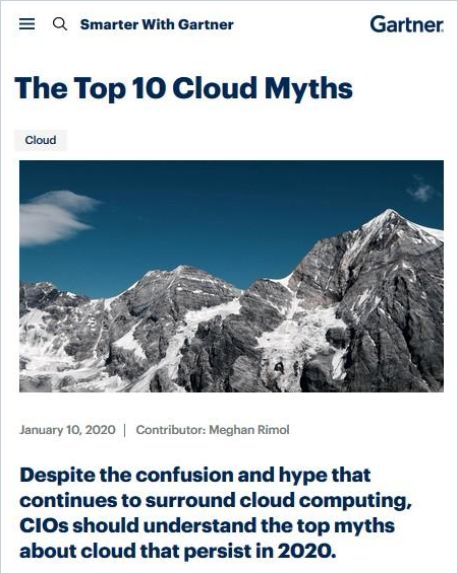
Be aware that different countries have different laws governing who can access what data. The biggest providers set up cloud regions and availability zones to avoid slow response and lags, and also to address data privacy and sovereignty regulations.
Beware the risk of “lock-in,” being beholden to one service provider. Once you move your information and processes to the cloud, it might be difficult to migrate them elsewhere due to proprietary protocols. Do your due diligence when you look at providers. However, the sector is standardizing so moving from one provider to another, though not seamless, is much easier than in the past.
The cloud should be thought of as a means to an end. The end must be specified first.
Meghan Rimol
3. Should You Stay Or Should You Go?
Identify what functions you’d ideally like to migrate to the cloud, then evaluate the complexity of the task and available options. Ask lots of security questions. Some jobs will be a simple migration, and others will involve rebuilding applications or programs. You may have geographic restrictions you’re obliged by law to keep in mind, for instance, about data privacy. This Boston Consulting Group report outlines more of what’s involved in migration. Another report from Boston Consulting Group lays out the most common pitfalls companies fall into when migrating assets to the cloud.
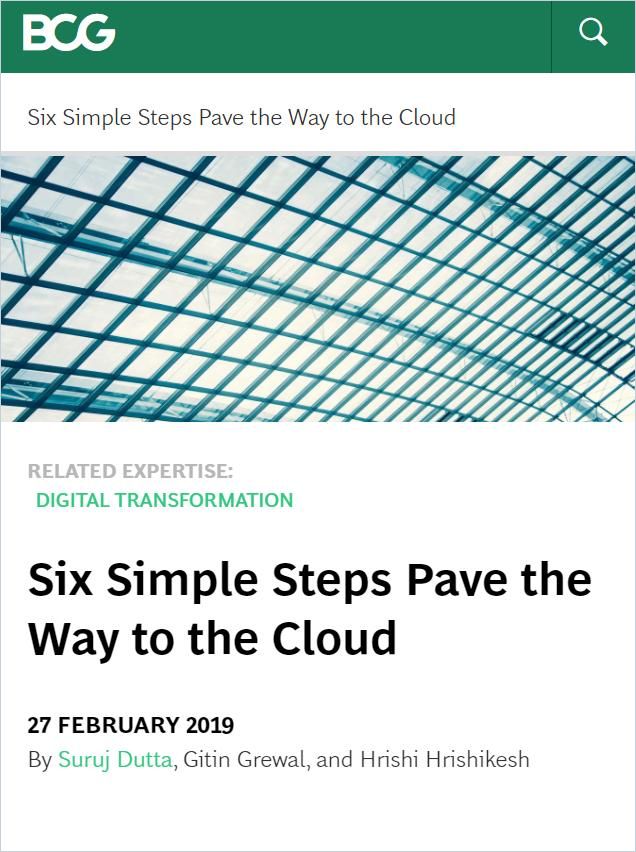
Redundancy is your friend. Tech journalist Marc Ambasna-Jones cautions that companies don’t always attain their goals by moving to the cloud. Many companies choose multiple vendors to spread the risks of provider dependency or create a hybrid cloud system, where some of the most vital functions are maintained on-premises. Companies’ options span from private dedicated servers to utilizing multiple public cloud services and hybrid systems use a mix of both. Make segmentation decisions based on an evaluation of the sensitivity of your data plus the computing power you’ll need. From there, you can decide on best practices for information processing.
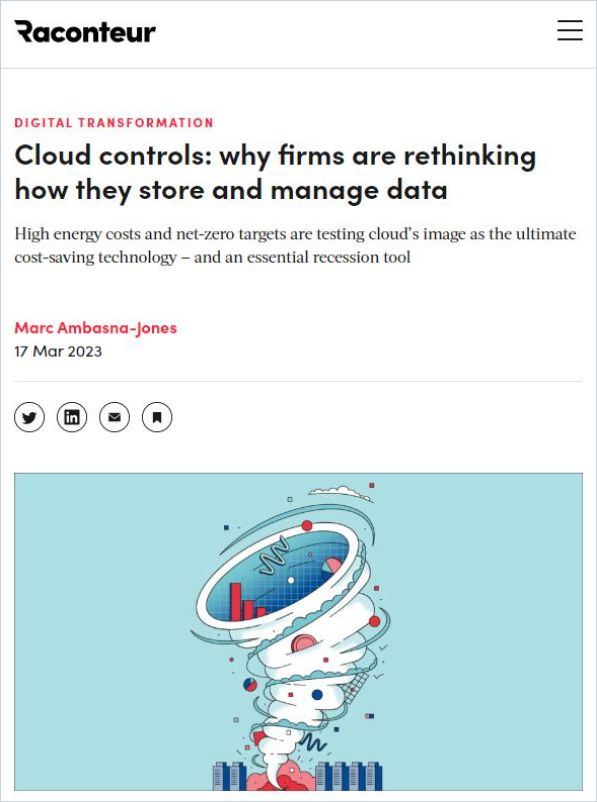
One of the biggest barriers to migrating to a cloud-based solution has been training employees on this fast-evolving technology. But an emerging class of “simplified” cloud services enable easier access for non-techies, including no- or low-code deployment and drag-n-drop interfaces. Companies with a robust IT department might prefer more sophisticated open-source systems that offer more flexibility.
Techopedia recommends controlling cloud costs by understanding every element of your service level agreement (SLA) including minimum storage space required, CPU time costs, data transfer costs, security tools and their backup and recovery processes.
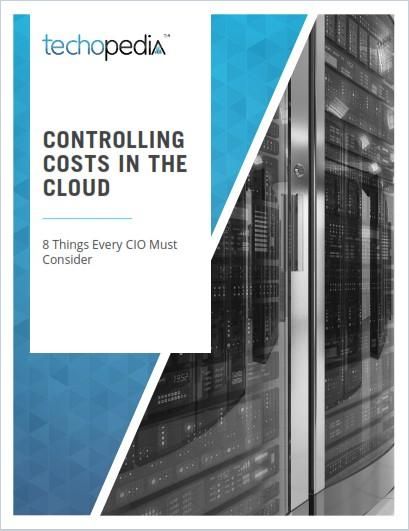
Internally, devise a usage policy to limit CPU time and work within whatever company guidelines or regulations you need to address with the aim of maintaining optimal security.
4. Turbo-Charged Cloud Systems
Cloud architecture optimizes the use of other technologies, such as artificial intelligence (AI), blockchain and the Internet of Things (IoT). Algorithmic systems are built atop enormous amounts of data. Mining this data for insights can be costly; there are many ways to go wrong. These analytics used to only be available to the largest companies, but with cloud computing, these business intelligence tools are more available to all over the internet. Emerald Cloud Labs makes the AI code its parent company created to run lab experiments available to its customers as a virtual service. Client companies remotely set up the parameters of experiments using programmable machines and oversee them via video in real time.
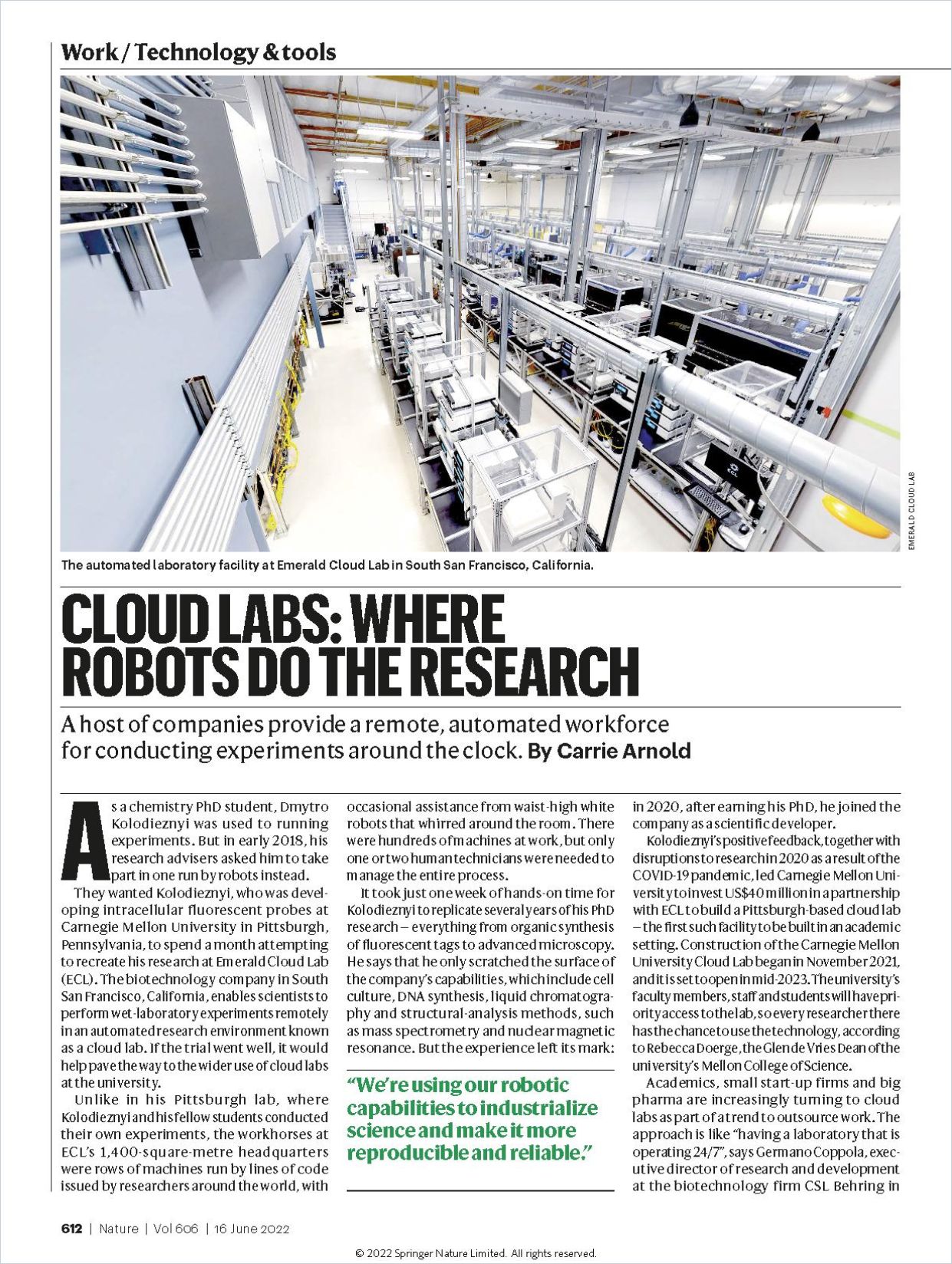
One benefit is the ability to reproduce processes exactly and review code if something goes wrong to find the source of the error. But it’s important to remember the drawbacks of algorithmic systems. Too often, dependence on these seemingly invisible technologies obscures its liabilities. Cloud architecture further obscures ethical oversight. Louise Amoore argues in Cloud Ethics that the biases embedded within algorithmic systems are not easily fixable, contrary to the statements made by the companies leading AI development. This is a conclusion many tech ethicists have reached that remains unaddressed.

While quantum computing plus AI promises amazing breakthroughs, for instance, in biopharma where researchers can model complicated molecules and track their interactions in concurrent experiments at a large scale, the technology also has the ability to dramatically escalate the threats to security, especially when combined with AI. Learn more about these compounding threats in these Journal articles:
Cloud-based security requires different thinking from old-school firewalling. It works by monitoring both criminals and customers and analyzing what is normal activity in order to flag abnormal activity. The more data a cloud system has to analyze, the more comprehensively it can recognize anomalous behavior. Companies that use cloud services reduce their costs of keeping up with enhanced security features and investments, but they still share responsibility.
What matters is not so much seeing the ‘where’ of the data as it is the capacity to extract patterns and features from data to open onto targets of opportunity, commercial and governmental.
Louise Amoore
Learn More about Cloud Computing:
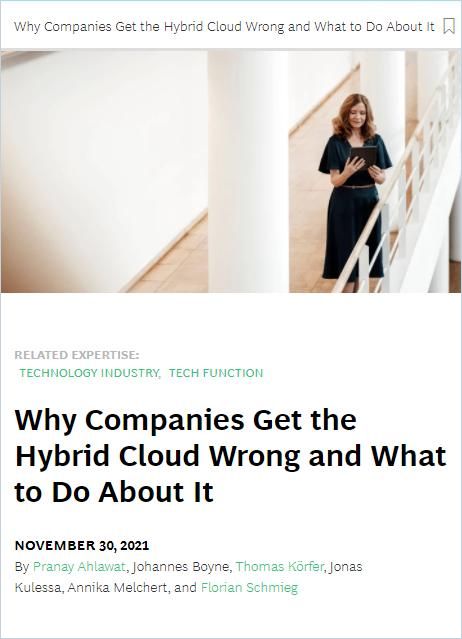
Why Companies Get the Hybrid Cloud Wrong and What to Do About It
Boston Consulting Group Read Summary
